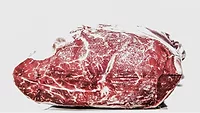Microbial Food Safety Efforts Across EU: Pathogens, Mycotoxins, AMR

Credit: Gustavo Fring (gustavo-fring) via Pexels
The European Scientific Network on Microbiological Risk Assessment (MRA) recently convened for its 22nd meeting to discuss various national efforts related to microbial food safety hazards such as prevalent foodborne pathogens, mycotoxins, antimicrobial resistance (AMR), and other risks.
MRA was established by the European Food Safety Authority (EFSA) in 2006 to facilitate information-sharing, harmonization, and cooperation among risk experts, EFSA, EU Member States, and other stakeholders. At present, 25 EU Member States, as well as Switzerland and Norway, participate in MRA. The 22nd meeting took place virtually and in-person on October 18–19, 2022 in Parma, Italy.
Regarding Campylobacter, a participant from Denmark gave a One Health-based “proof of concept” for applying data-driven and risk-based control actions along the poultry supply chain to mitigate human campylobacteriosis. The presentation also gave way to a discussion of the impact of flocks originating from high-risk farms on human Campylobacter infection. Another participant from Austria provided results from a three-month baseline study in Austria, wherein neck skin sampling was conducted in broiler slaughterhouses to verify regulatory compliance with hygiene criteria for broiler carcasses. The results were compared to a parallel study conducted in 2008.
In Switzerland, there has been a rise of Salmonella Napoli infections from an unknown source. Several laboratories across the nation carried out a large-scale analysis campaign in 2021 to try to determine possible sources and causes of the trend. Additionally, a participant presented on Salmonella enterica at farms, slaughterhouses, and butchering for pork, beef, and broilers in Estonia in 2016–2020, and the Estonian Salmonella control program was introduced. Finally, EFSA’s Biological Hazards and Animal Health and Welfare unit (BIOHAW) reported on a rapid outbreak assessment conducted for a 2022 salmonellosis outbreak linked to chocolate contaminated by Salmonella Typhimurium. The outbreak resulted in 324 cases across 12 EU countries and the UK, and epidemiological investigations were able to suggest specific products made by a certain production facility as one source of the outbreak.
A presentation by a Belgian participant underlined the importance of environmental monitoring of L. monocytogenes. The presentation discussed risk-based sampling plans, accurate sampling techniques, sampling moments, and practical experiences for wet and open food processing.
A Bulgarian participant provided results on a study on AMR in pigs, which evaluated the prevalence of antimicrobial-resistant E. coli in swine feces and lagoons. Some isolates showed AMR to ampicillin, trimethoprim, sulfamethoxazole, amoxicillin, tetracycline, chloramphenicol, and other antibiotics. Also presented was a report by Wageningen University that demonstrated how the practice of including ionophores to chicken feed causes AMR.
Miscellaneous activities related to foodborne pathogens that were broached during the meeting centered on the current state of human Vibrio infections in Germany and the possible effects of climate change, and Toxoplasma gondii prevalence in the food chain and natural reservoirs in Slovakia. Additionally, a presentation from France demonstrated a qualitative risk assessment to investigate the probability of Monkeypox virus transmission from food.
Looking for quick answers on food safety topics?
Try Ask FSM, our new smart AI search tool.
Ask FSM →
A microbial food safety hazard aside from pathogens that was brought up at the meeting was molds, especially those that produce mycotoxins. A participant from Sweden presented on factors that influence the toxin production of molds, such as the product that has been contaminated and external conditions. The presentation provided mycotoxin content data for citrus fruits, stone fruits, peppers, potatoes, and tomatoes.
Another hazard discussed at the meeting was the transfer of anisakid allergens from fishmeal in feed, to livestock, to humans. A controlled chicken feeding trial was conducted in Belgium to explore the exposure of humans to anisakid allergens from poultry given Anisakidae-contaminated feed. Data analysis revealed peptides from six anisakid allergens present in the meat or blood of the chickens.
The EFSA One Health Whole Genome Sequencing (WGS) System, developed in response to a European Commission mandate, was also highlighted at the meeting. The EFSA One Health WGS System is interoperable with the European Center for Disease Prevention and Control’s (ECDC’s) Molecular Typing System.
Additionally, Spanish criteria used to classify food establishments by risk was debated during the meeting. The existing criteria were found to be accurate, but other criteria were suggested for consideration such as the adherence of establishments to a self-monitoring system, good hygiene practices, and proper employee training.
Finally, a BIOHAW representative presented on recently adopted and ongoing work by EFSA’s Panel on Biological Hazards (BIOHAZ). The work includes scientific opinions on the efficacy and safety of high-pressure processing (HPP) of food; the safety and efficacy of lactic acid to reduce microbiological surface contamination on carcasses from kangaroos, wild pigs, goats, and sheep; transmission of AMR and zoonotic agents during animal transport; microbiological safety of aged meat; and self-task on microbiological hazards associated with the use of water in post-harvest handling and processing operations of fresh and frozen fruits, vegetables, and herbs. A new BIOHAZ panel self-task mandate was also presented on the persistence of microbial hazards in food and feed production and processing environments, excluding primary production, for which the deadline is December 31, 2023.
The next MRA meeting is planned for autumn 2023.









